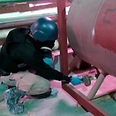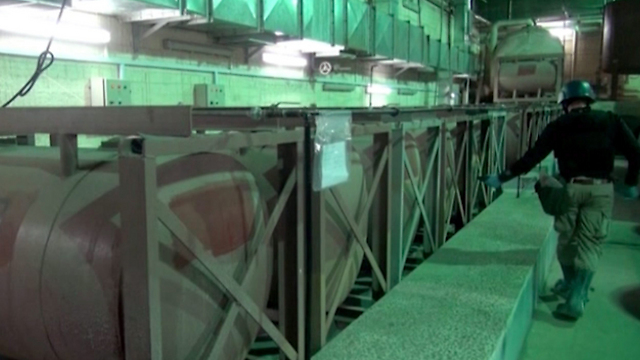
UN report concludes chemical weapons used in Syria
Report released Thursday reveals chemical weapons have been used at least five times during Syrian conflict. According to UN, in some cases children have been slaughtered
The report cites "credible evidence" and "evidence consistent with the probable use of chemical weapons" in the Syrian sites of Ghouta, Khan Al Asal, Jobar, Saraqueb and Ashrafieh Sahnaya.
Related stories:
- UN: Syria crimes evidence 'indicates' Assad role
- Syrian opposition alleges new poison gas attack
- All Syrian chemical weapons munitions destroyed
But the UN said it could not corroborate their use in two of seven sites studied – Bahhariyeh and Sheik Maqsood.
"The United Nations Mission concludes that chemical weapons have been used in the ongoing conflict between the parties in the Syrian Arab Republic," said the report, prepared by a team of experts led by Swede Ake Sellstrom.
However, the report does not attribute blame for the attacks, as this was beyond the mandate given the team by the UN Security Council.
Syrian President Bashar Assad has admitted his forces hold chemical weapons, and has vowed to surrender them to international experts. But he insists his forces did not target civilians.
Western and Arab governments, human rights groups and Syrian rebels accuse the regime of carrying out the attacks. Assad and his allies in Moscow and Tehran blame the rebels.
Sellstrom, who led an investigative mission to Syria, had already provided a preliminary report to UN Secretary General Ban Ki-moon on September 16.
That report concluded that banned chemical weapons had been used on a wide scale and that there was clear evidence that sarin gas was used in an attack in the Eastern Ghouta neighborhood near Damascus on August 21.
The final report said the mission "collected clear and convincing evidence that chemical weapons were used also against civilians, including children, on a relatively large scale" on that day in Ghouta.
"A number of patients/survivors were clearly diagnosed as intoxicated by an organophosphorous compound," the report said.
"Blood and urine samples from the same patients were found positive for sarin and sarin signatures."
The inspectors collected "credible information" corroborating allegations that chemical weapons were used in Khan Al Asal on March 19 against soldiers and civilians.
In Jobar, near Damascus, the inspectors "collected evidence consistent with the probable use of chemical weapons" there on "a relatively small scale against soldiers" on August 24.
But the report said it could not "establish the link between the victims, the alleged event and the alleged site" due to the "absence of primary information on the delivery system(s) and environmental samples collected and analyzed under the chain of custody."
In Saraqueb, the mission collected evidence "that suggests that chemical weapons were used" on a small scale there – "also against civilians" – on April 29 of this year.
In Ashrafiah Sahnaya, near Damascus, the inspectors collected evidence that "suggests" chemical weapons were used there on August 25 "on a small scale against soldiers."
Here again, however, it was not able to establish the link between the alleged event, the alleged site and the survivors due to absence of primary information on the delivery systems and environmental samples, according to the report.
Another factor, it said, was that samples collected by the inspectors "one week and one month" after the alleged incident tested negative.
In Bahhariyeh and Sheik Maqsood, where the use of chemical weapons is alleged to have occurred on August 22 and April 13 respectively, the UN could not corroborate the claims.
In Bahhariyeh this was due to the absence of positive blood samples, it said.
The Syrian regime had accused the opposition of using chemical weapons in Khan Al Asal, as well as in Jobar, Ashrafiah Sahnaya and Bahhariyeh.
The other alleged incidents were reported by the opposition or by Western countries supporting them.
The report, presented to Ban by Sellstrom on Thursday, has been distributed to Security Council members. The panel was expected to take it up on Monday.
Ban was due to present it to General Assembly on Friday.
When he received the report, Ban called the use of chemical weapons "a grave violation of international law and an affront to our shared humanity."
"We need to remain vigilant to ensure that these awful weapons are eliminated, not only in Syria, but everywhere."
Under an international agreement brokered to avoid US military strikes on the Damascus regime – which resulted in a landmark Security Council resolution – Syria's most dangerous chemical weapons have to be out of the country by a December 31 deadline and destroyed by June 30, 2014.
- Receive Ynetnews updates directly to your desktop











